
[Photos by Andrew van Leeuwen]
The photography work for the recently launched book, Gordon Walker, A Poetic Architecture, took me all over the Pacific Northwest, from the craggy coastline of the San Juan Islands, to the wooded mountains of North Idaho. The documentation comprised more than 25 projects, and ranges from structures as simple as a gazebo, to those as complicated as college campus master plans. In between, there is an abundance of masterfully designed residences. Every book has its constraints, and this one was no exception. Despite a career’s-worth of extraordinary work, the format simply did not allow enough pages to present every project; of the many not included, two residences stand out and warrant coverage. Today’s post features the Boyce residence on Whidbey Island, and the Williams residence on Seattle’s Queen Anne Hill. Both have been handsomely remodeled over the years, and retain the soul of the original Gordon Walker design. My gratitude goes out to the current owners who graciously welcomed me in and allowed me to photo-document each home.
Boyce Residence, Whidbey Island, 1978
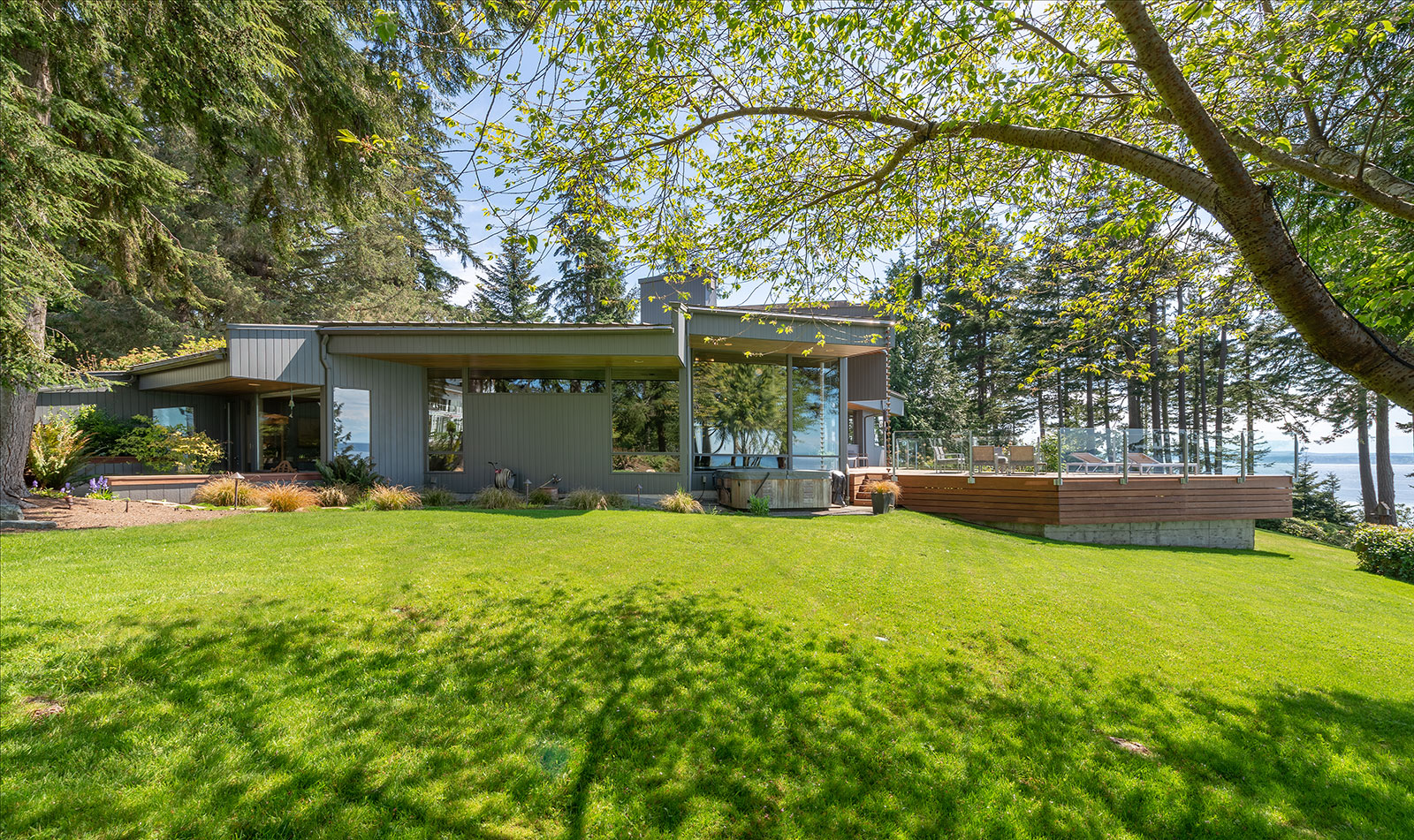
[North elevation of the Boyce Residence]
A delightful wooded driveway delivers the visitor to this discreet residence along Whidbey Island’s west-facing shoreline. Positioned just at the edge of the forest, the site holds views of the Puget Sound, the Olympic Peninsula, and the Olympic mountain range. The house sits intentionally low, allowing nature and the view to take center stage.

[Original green roof on the Boyce Residence, photographer unknown]
Pivoting around a common center point, the roof planes of the house fan out and up; they were originally topped with sod, further blending the structure into the landscape (this detail was removed as part of a previous remodel), and the lowest one, at the entry, is positioned to create an intimate and personable approach.
[Hallway and roof planes inside the Boyce Residence]
Proceeding through the house, the planes step up one by one, culminating in a double-height space at the common area, the center of which is marked by a cast-in-place concrete hearth that supports a secondary surface of beams that cradle a delicate loft above (a signature of Walker’s early work). Roof joists are exposed, and the walls are lined with lightly stained cedar, offering visual warmth at the interiors.
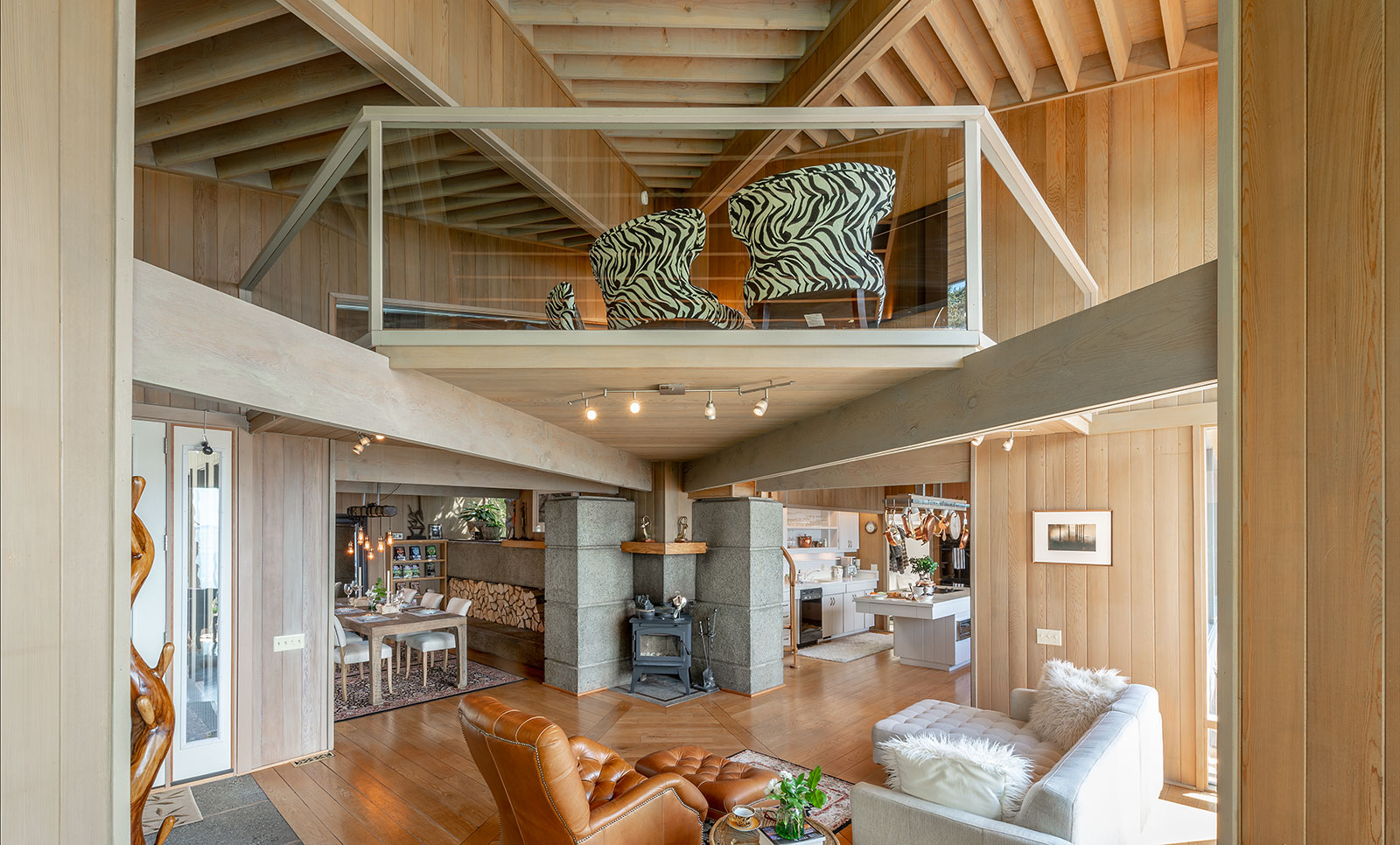
[Cast-in-place concrete hearth at the center of the Boyce Residence structure]
Outside, an expansive terrace is positioned as an additional leaf of the massing concept, extending from the structure’s pivot point. Overall, the residence was a delight to photograph, as the various angles within offer dynamic shots and lively perspectives.
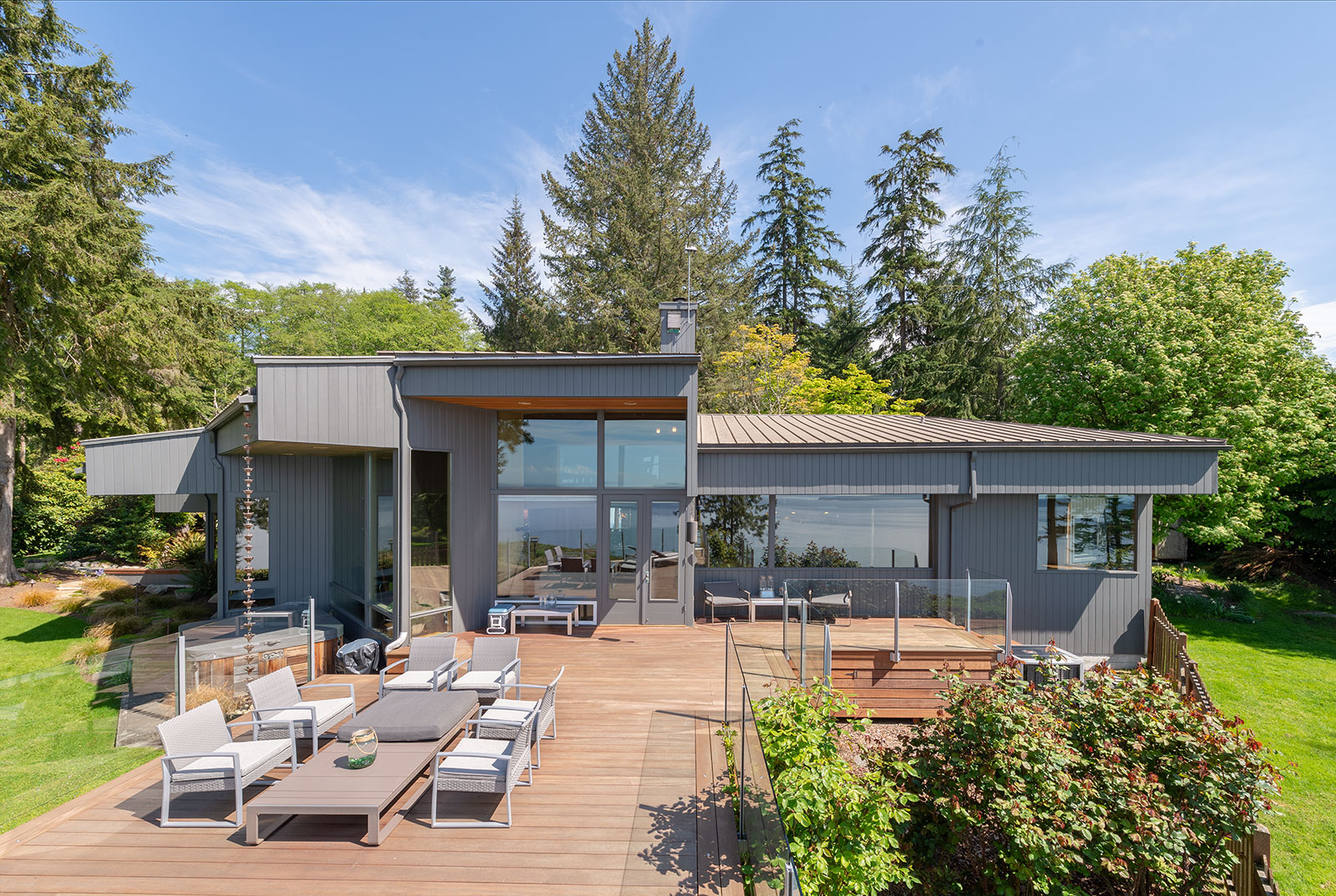
[West elevation and terrace of the Boyce Residence]
Williams House, Seattle, 2001
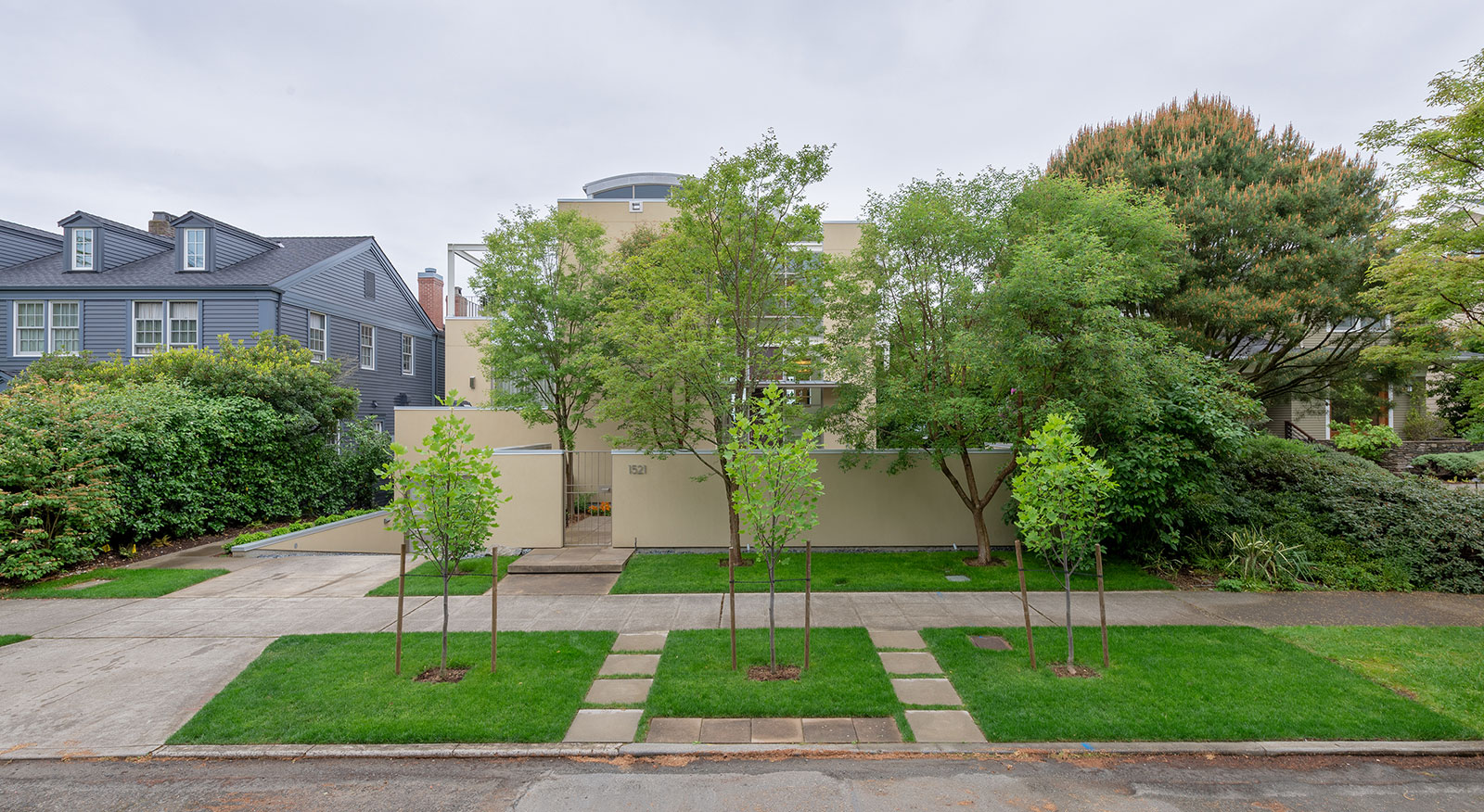
[Street facing elevation of the Williams Residence]
While subdued and partially obscured by landscaping from the street, the Williams residence gives just enough hints to let the passerby know something special is going on within.
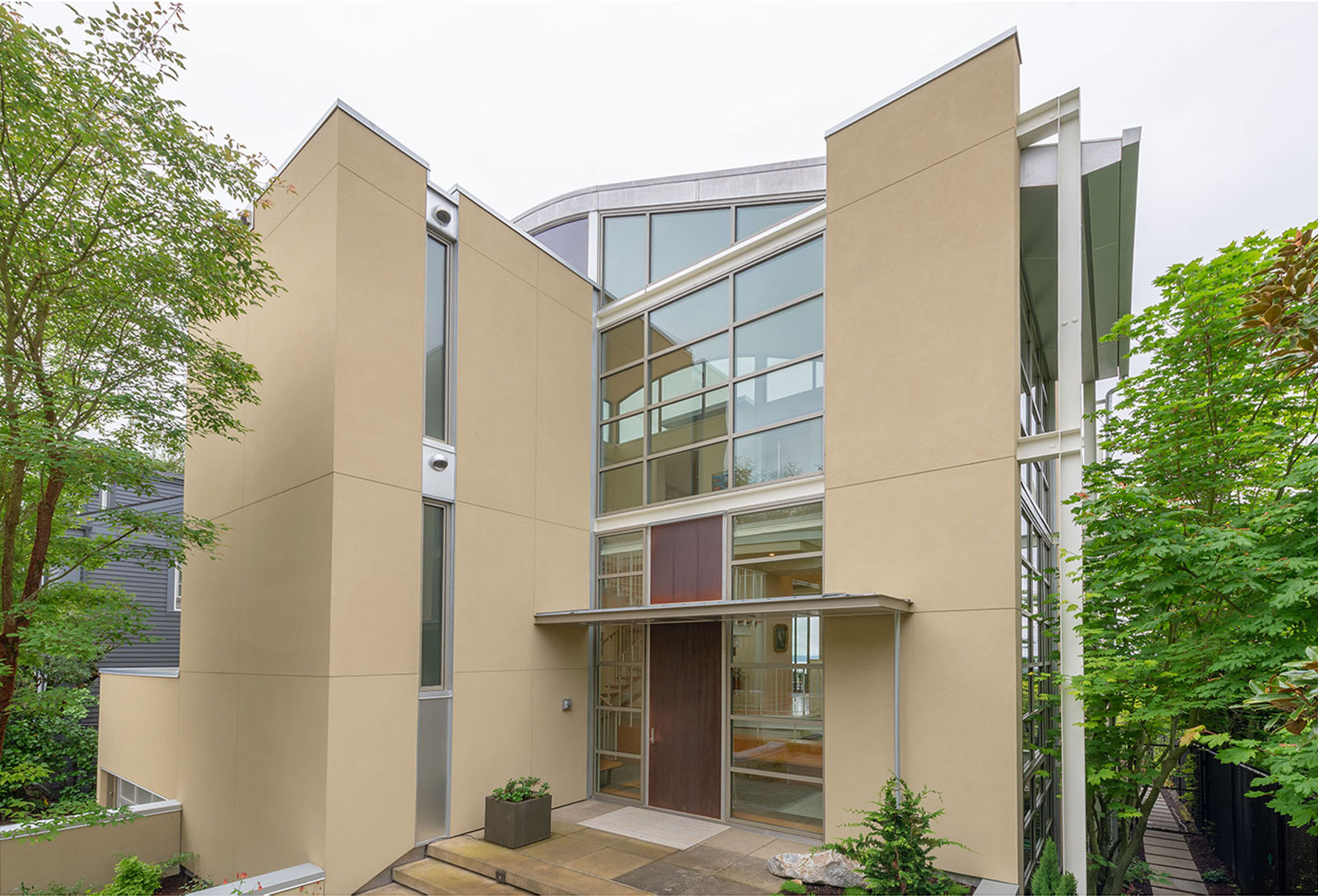
[Entry court and front door of the Williams Residence]
A tidy entry court leads to a double-height wall of glass containing a 10-foot tall cor-ten steel door. Upon entering the atrium, a steel and maple tread stairway provides a visual feast for the design-minded. This intricate and rhythmic stair is the jewel of the house, acting as both instrument and aesthetic symphony; its clean lines and attenuation are straight out of Scandinavia—needless to say, I spent the bulk of the photo shoot pointing the lens at this feature.
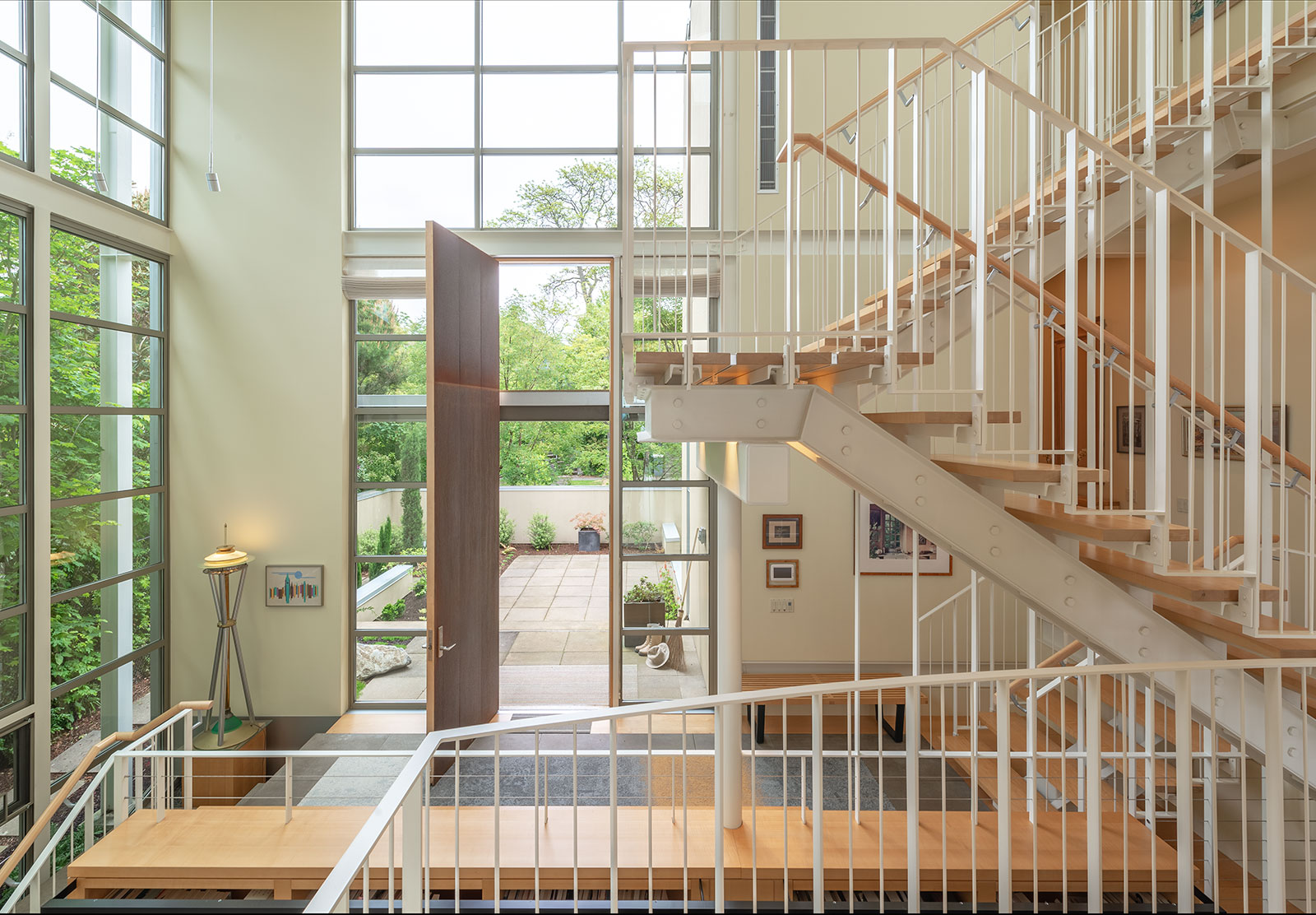
[Entry atrium and stairway inside the Williams Residence]
Moving from floor to floor, the architecture continues to deliver. Interior spaces frame thoughtful views of Magnolia, the Puget Sound and the Olympic Mountains, and a courtyard space is carefully inserted at the main floor adjacent to the common areas.

[West facing courtyard at the Williams Residence]
At the backyard, a sleek lap pool extends out, bracketing the ground-level terraces and accentuating the perspective with dramatic lines.
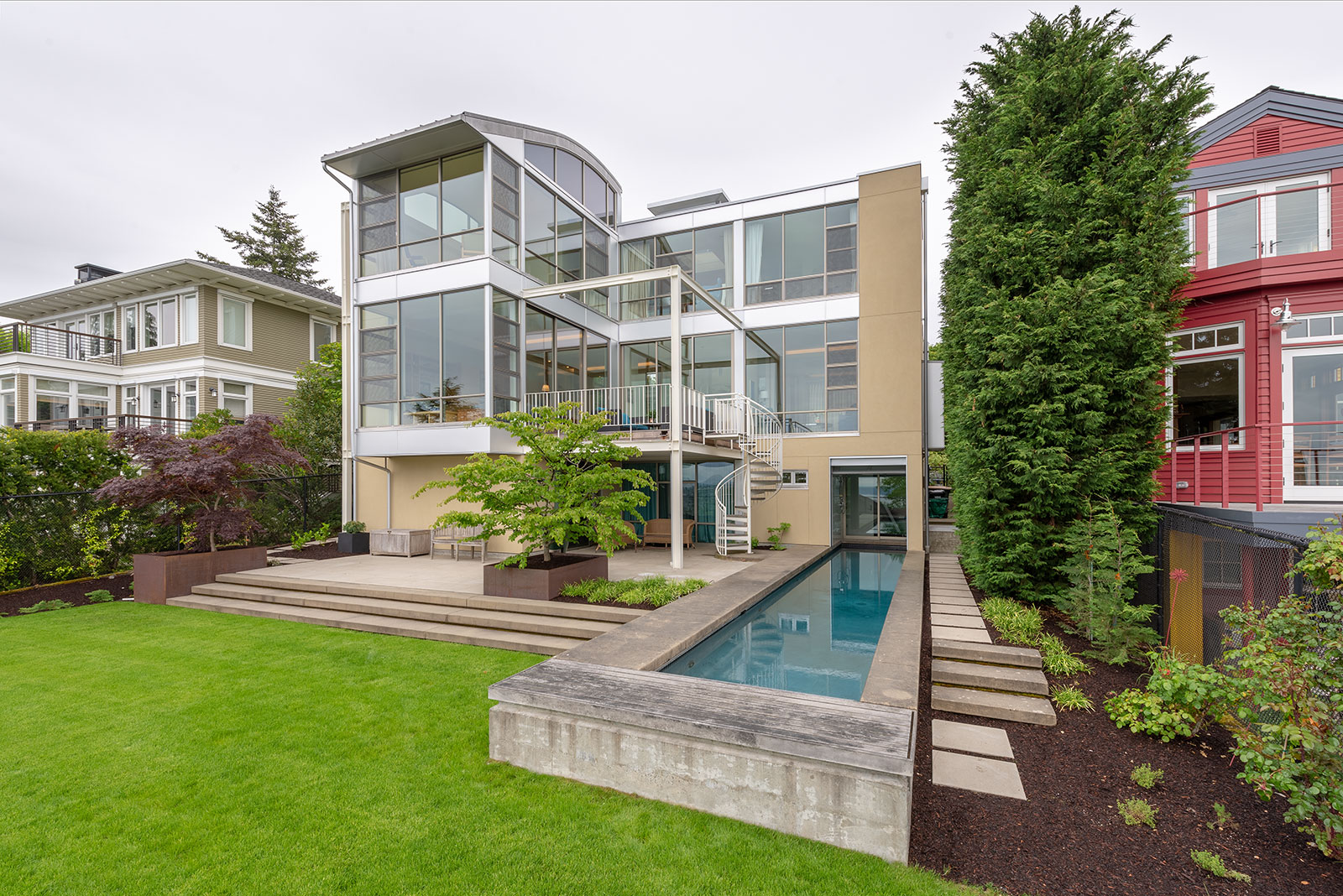
[West elevation with lap pool at the Williams Residence]
The Boyce and Williams residences are key pieces of Walker’s portfolio, and important in his evolution as a master architect. It was an honor to study and photograph each of these projects.
For more behind the scenes architectural photography, click here.
Cheers!






